The Hanoi Police Museum is a unique glimpse into the city’s rich law enforcement about Vietnam People's Public Security history. This captivating museum takes visitors on a journey through time, showcasing the evolution of the Hanoi police force from its early days to the present. Whether you’re a history buff or just curious about Vietnam’s past, this museum is a treasure trove of fascinating stories and artifacts.
Necessary information about the Hanoi Police Museum
The museum offers a deep dive into the history and operations of the Hanoi police force. The museum is a must-visit for history enthusiasts and those interested in Vietnam’s law enforcement history.
History of Hanoi Police Museum
Founded in the early 20th century, the museum was established to commemorate the Hanoi police force’s pivotal role in Vietnam’s history. Initially, the museum focused on gathering and preserving artifacts such as uniforms and equipment from different historical periods.
As Vietnam underwent significant political changes, including the colonial era and the Vietnam War, the museum’s exhibits expanded to reflect these shifts. The collection now includes detailed displays from various eras, illustrating the police force’s evolving role and contributions.
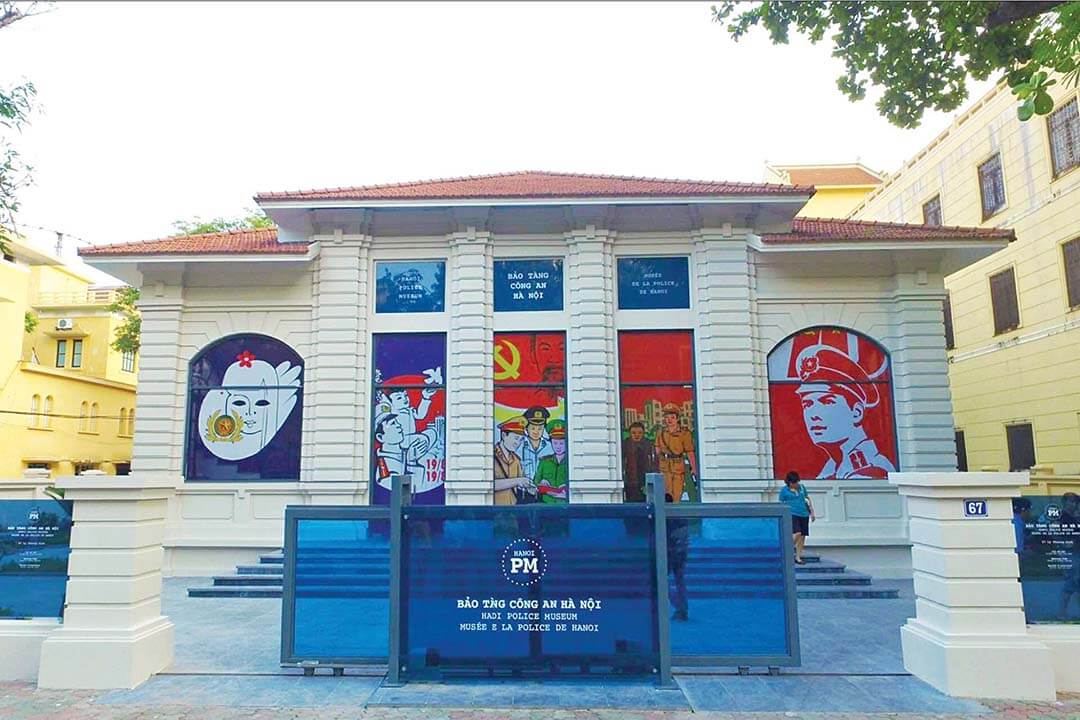
In recent years, the museum has modernized its approach, incorporating interactive and multimedia elements to engage visitors. These updates provide a comprehensive view of both historical and current aspects of law enforcement in Vietnam.
Where is the Hanoi Police Museum?
Located at 67 Ly Thuong Kiet Street, within the Hoan Kiem District. The museum’s central position ensures that it is easily reachable through various modes of transportation, including public buses, taxis, and private vehicles. The area also offers ample parking for visitors arriving by car.
Situated in a vibrant part of the city, the museum is close to several other significant landmarks. Attractions such as Hoan Kiem Lake, the historic Old Quarter, and St. Joseph’s Cathedral are all within walking distance. This convenient location allows visitors to explore a range of cultural and historical sites in one area, enhancing their overall visit to Hanoi.
Things to do at Hanoi Police Museum
Explore the museum’s diverse exhibits and enjoy an insightful experience. Here’s a quick overview of what to expect:
Take lots of photos in the museum
The museum offers a rich collection of historical artifacts and exhibits, making it a prime destination for photography enthusiasts. Visitors are encouraged to capture images of the diverse range of displays, including historical uniforms, vintage equipment, and archival documents. These photographs not only create lasting memories but also highlight the museum’s unique contributions to the preservation of law enforcement history.
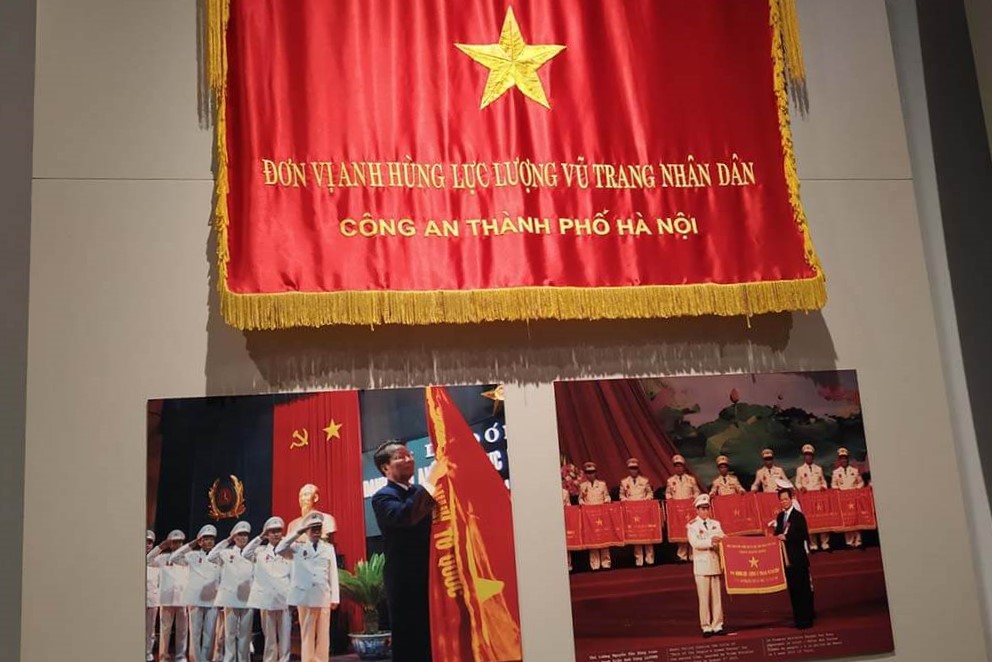
Taking photos of the exhibits allows for a deeper engagement with the museum’s content. By documenting the details of each item, visitors can better appreciate the evolution of policing techniques and the historical significance of the artifacts. This visual record enhances the overall experience, offering insights into the artifacts’ roles and the broader narrative of the Hanoi police force.
Visit the exhibition in the Hanoi Police Museum
The museum features several well-curated thematic exhibitions that delve into different periods and aspects of Hanoi’s policing history. Each exhibit is designed to provide a detailed narrative about the artifacts and their historical context, ensuring a rich educational experience.
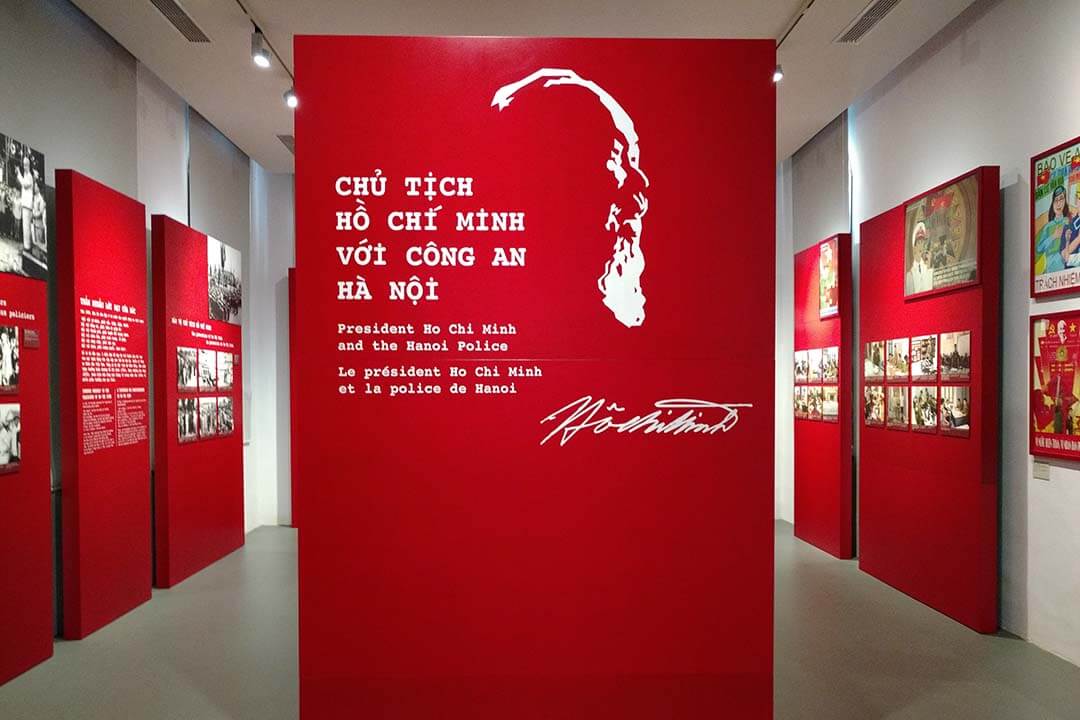
From early 20th-century colonial-era displays to post-war developments, the exhibitions are organized to reflect the changing dynamics of law enforcement. Informative labels and contextual background information accompany each section, helping visitors understand the significance of the items on display. This structured approach allows for a comprehensive exploration of the police force’s evolution and its impact on Vietnam’s history.
Things you might be interested in:
8 themed exhibition rooms in the Hanoi Police Museum
The museum is divided into eight themed exhibition rooms, each highlighting a different aspect of the city’s police history. Here’s a brief overview of what you can expect
President Ho Chi Minh with the Hanoi Police
This room delves into President Ho Chi Minh’s significant impact on the Hanoi police force. It features a curated selection of photographs, official documents, and personal artifacts that illustrate his engagement with the police. The exhibit highlights key moments and contributions, showcasing how Ho Chi Minh’s leadership influenced and supported the development of the police force during crucial historical periods. It offers a profound look at the synergy between the leader and the law enforcement body, emphasizing the strategic and symbolic roles played by both.
Police Station Model Area
The Police Station Model Area presents a series of meticulously crafted replicas of historical police stations. These models provide a detailed view of how police facilities have evolved, from early designs to modern configurations. By exploring these scale models, visitors gain insights into the changes in architectural styles, technological upgrades, and organizational layouts of police stations. This exhibit serves as a tangible representation of the progress in law enforcement infrastructure and its adaptation to the demands of various historical periods.
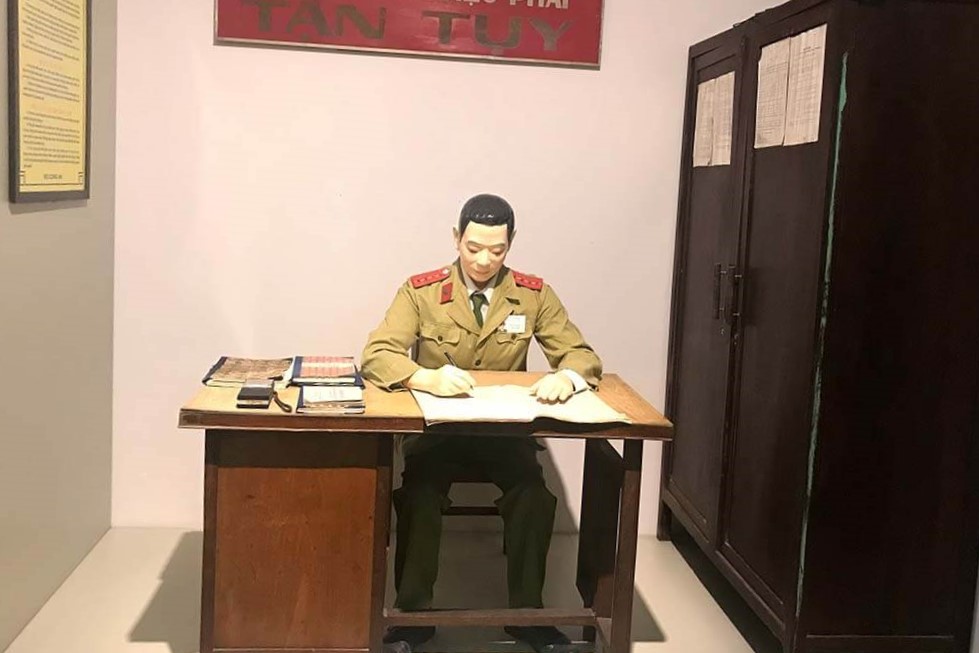
Statues of all Hanoi Police Forces
In this exhibit, a collection of statues represents the diverse branches and roles within the Hanoi police force. Each sculpture honors the contributions of different police divisions, capturing their unique functions and dedication throughout history. The statues are crafted to celebrate the service and commitment of officers, providing a visual tribute to their efforts in maintaining public order and safety. This display emphasizes the collective achievements and historical significance of the police force through artistic representation.
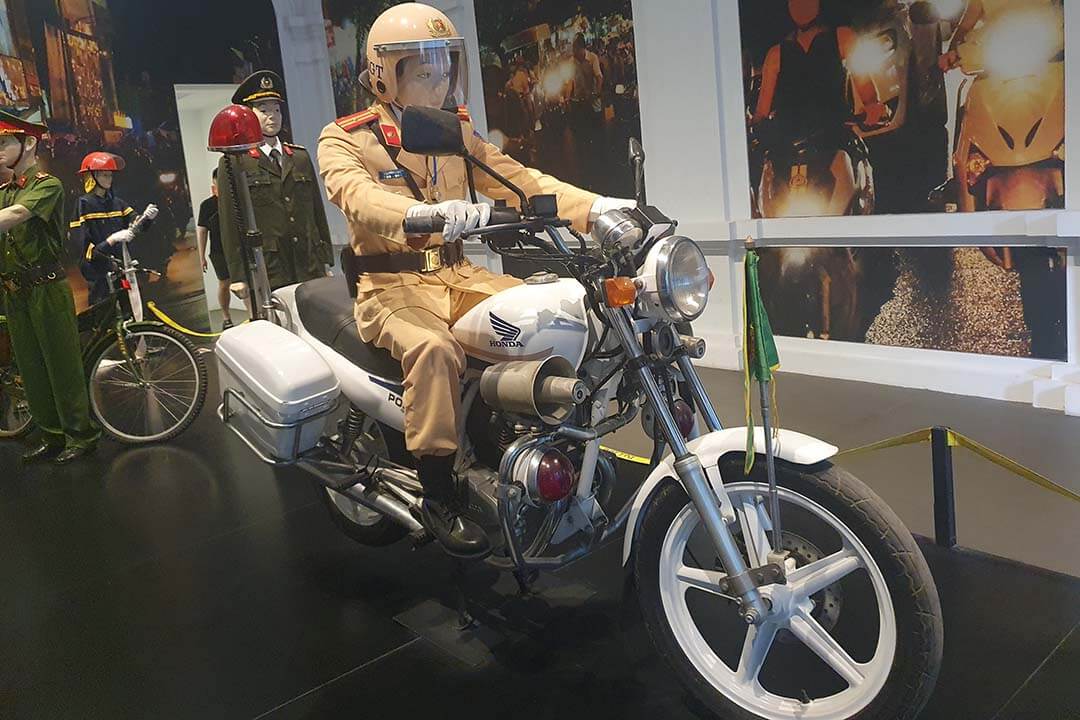
Uniforms of Hanoi Police Forces, 1945-2015
The uniforms of the Hanoi Police Forces exhibit showcases the evolution of police uniforms from 1945 to 2015. It features a variety of uniforms that illustrate how police attire has changed over the decades in response to technological advancements and historical events. This section highlights the practical and stylistic transformations in uniform design, reflecting broader shifts within the police force and its adaptation to changing needs and circumstances.
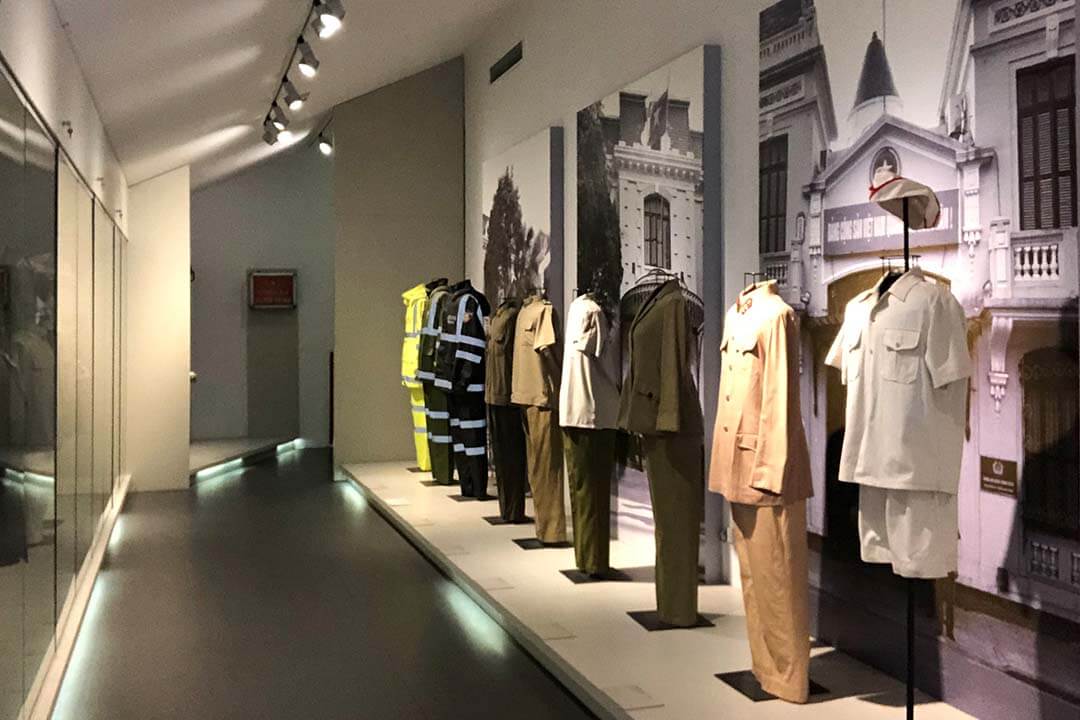
Hanoi Police, 1945-1954
This exhibition explores the immediate post-war period, focusing on the transition from colonial rule to an independent Vietnam. Artifacts and documents in this room provide insights into the early challenges faced by the Hanoi police as they navigated the complexities of a new national identity. The display offers a historical context for the police’s role during a pivotal time of reconstruction and political change.
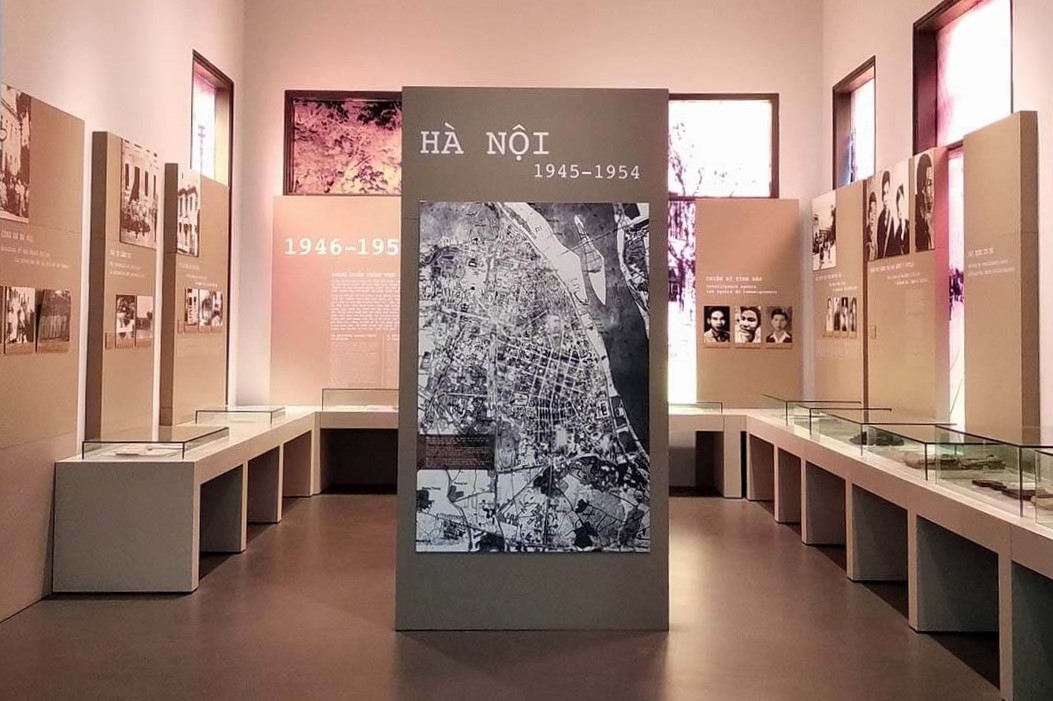
Hanoi Police, 1954-1975
The section dedicated to the years 1954-1975 covers the Vietnam War and the reunification of the country. Through a range of artifacts and narratives, it illustrates how the police adapted to the demands of a nation at war and the subsequent process of national integration. This exhibit provides a comprehensive view of the police force’s operational and strategic adjustments during a period marked by significant conflict and transformation.
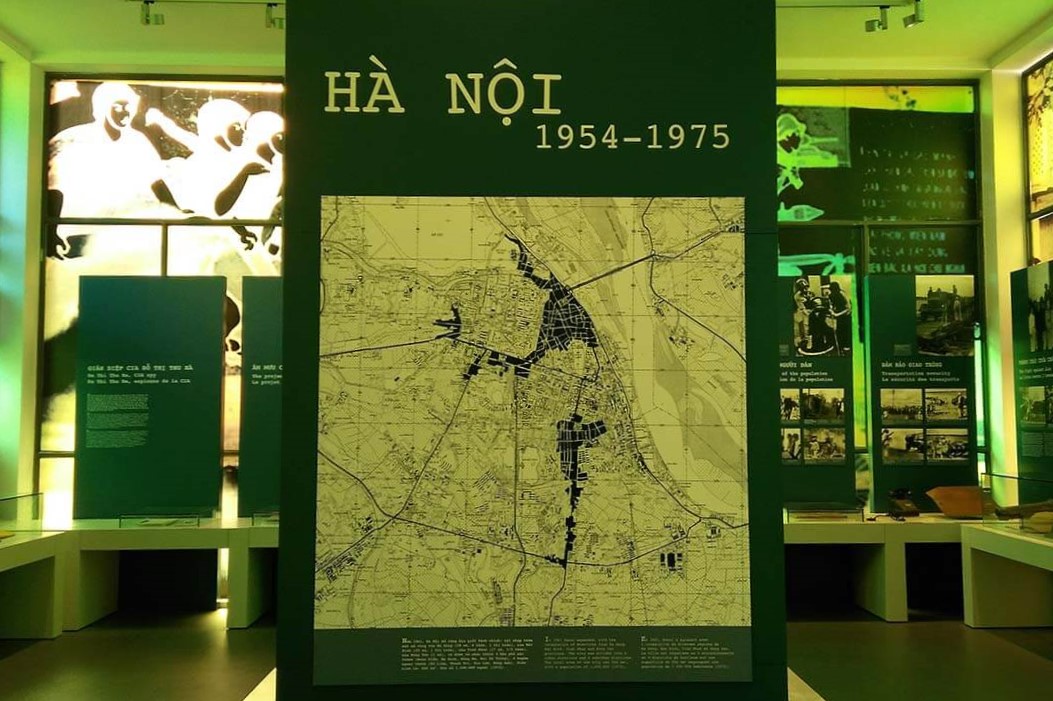
Hanoi Police before Vietnam’s reformation period, 1975-1986
This exhibit focuses on the period leading up to Vietnam’s economic reforms, examining the role of the police force during a time of political and social transition. The display includes artifacts and documents that highlight the challenges and changes faced by the police as the country prepared for economic reform. It offers a perspective on the evolving responsibilities of the police and their response to the broader socio-economic shifts of the time.
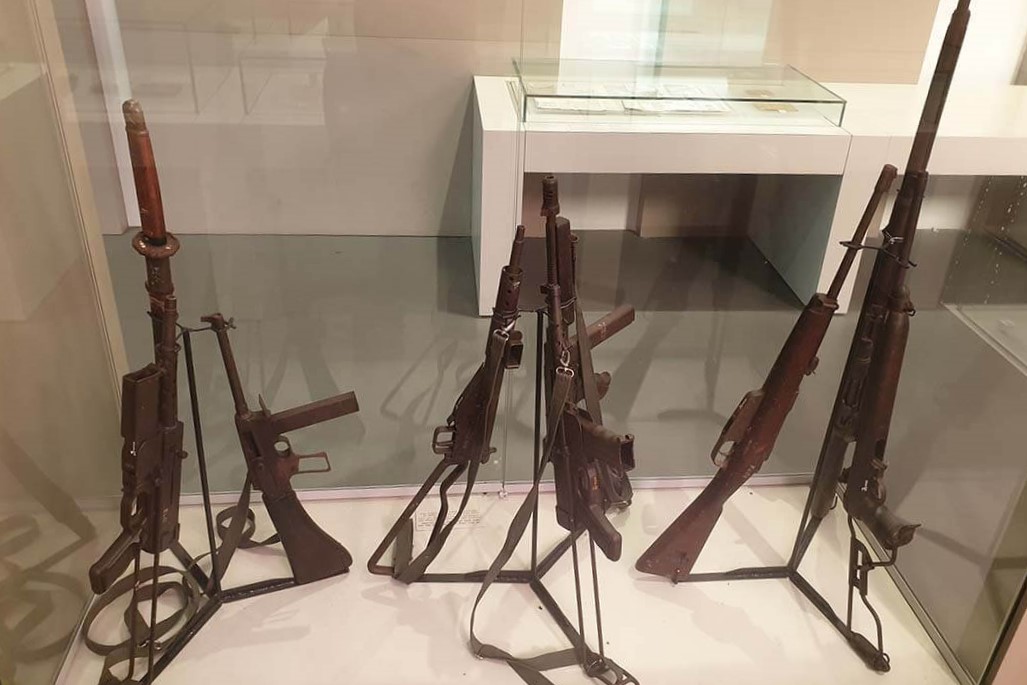
Hanoi Police, from 1986 onwards
The final room highlights the developments within the Hanoi police force following Vietnam’s economic reforms. This section showcases modern advancements, including technological innovations and changes in police roles. It reflects the police force’s adaptation to contemporary challenges and its ongoing contributions to public safety in a rapidly evolving societal landscape.
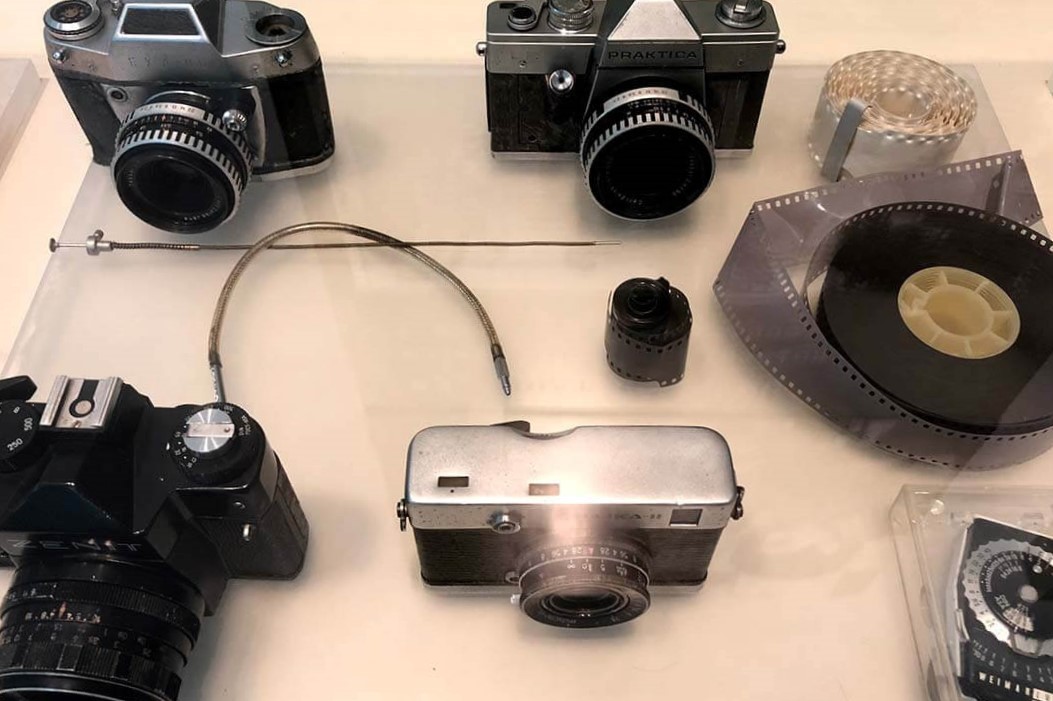
Other must-visit attractions in Hanoi
While visiting the museum, you can also explore other notable attractions in Hanoi:
Ho Chi Minh Mausoleum
The Ho Chi Minh Mausoleum is an essential destination for those exploring Vietnam’s historical landscape. This imposing monument, located in Ba Dinh Square, is the final resting place of President Ho Chi Minh, the revered leader of Vietnam’s independence movement. The mausoleum’s grand architecture, inspired by traditional Vietnamese and Soviet styles, reflects the deep respect held for Ho Chi Minh.
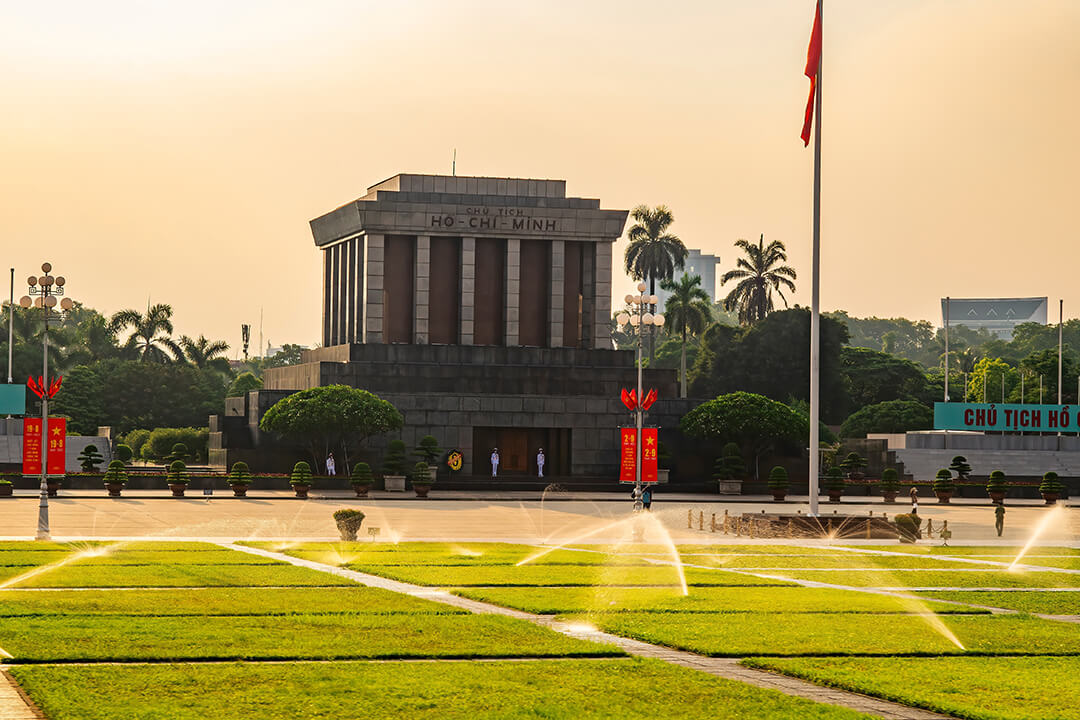
Visitors can witness the changing of the guard and pay their respects in a solemn and respectful atmosphere. The surrounding complex also includes the Presidential Palace, Ho Chi Minh’s stilt house, and the Ho Chi Minh Museum, all of which offer additional insights into the life and legacy of Vietnam’s founding fathers.
Hoan Kiem Lake
Nestled in the heart of Hanoi, Hoan Kiem Lake is a picturesque and tranquil escape from the city’s hustle. The lake is bordered by historic landmarks, including the Ngoc Son Temple situated on an island in the lake, connected by the charming red-painted Huc Bridge. Visitors can enjoy a stroll along the lake’s tree-lined pathways, which provide a scenic backdrop for relaxation and reflection. The lake is also a popular spot for locals to engage in morning exercise and traditional tai chi, adding to its vibrant atmosphere.

One Pillar Pagoda
The One Pillar Pagoda is a distinctive Buddhist temple renowned for its unique architectural design. Constructed in 1049 during the Ly Dynasty, the pagoda is built on a single stone pillar and resembles a lotus blossom, symbolizing purity in Buddhism. This historic structure is situated within the grounds of the Ho Chi Minh Mausoleum complex and is a revered symbol of Hanoi’s cultural and religious heritage. Its design and historical significance make it a notable attraction for visitors interested in Vietnamese history and architecture.
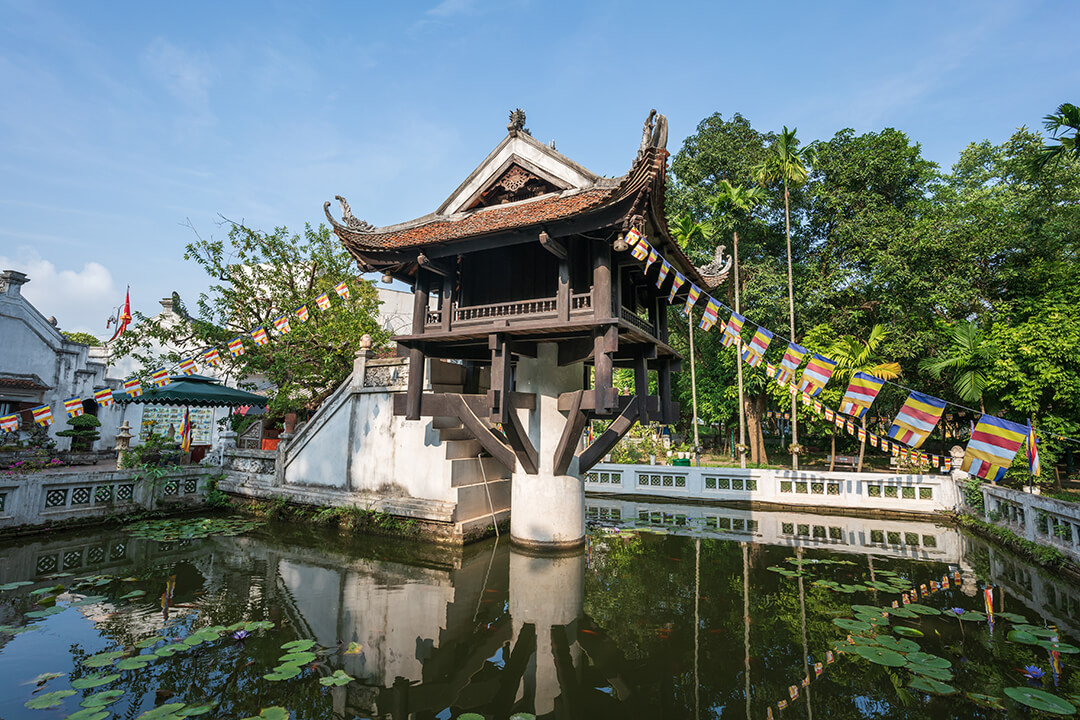
Hanoi Old Quarter
The Hanoi Old Quarter is a bustling district known for its vibrant streets, traditional architecture, and lively markets. Characterized by its narrow alleyways and colonial-era buildings, the Old Quarter offers a glimpse into Hanoi’s rich past. Visitors can explore numerous street markets, sample local street food, and experience the daily life of Hanoi’s residents. The area is also home to several historic temples and ancient houses, providing a rich cultural experience and a sense of the city’s historical development.
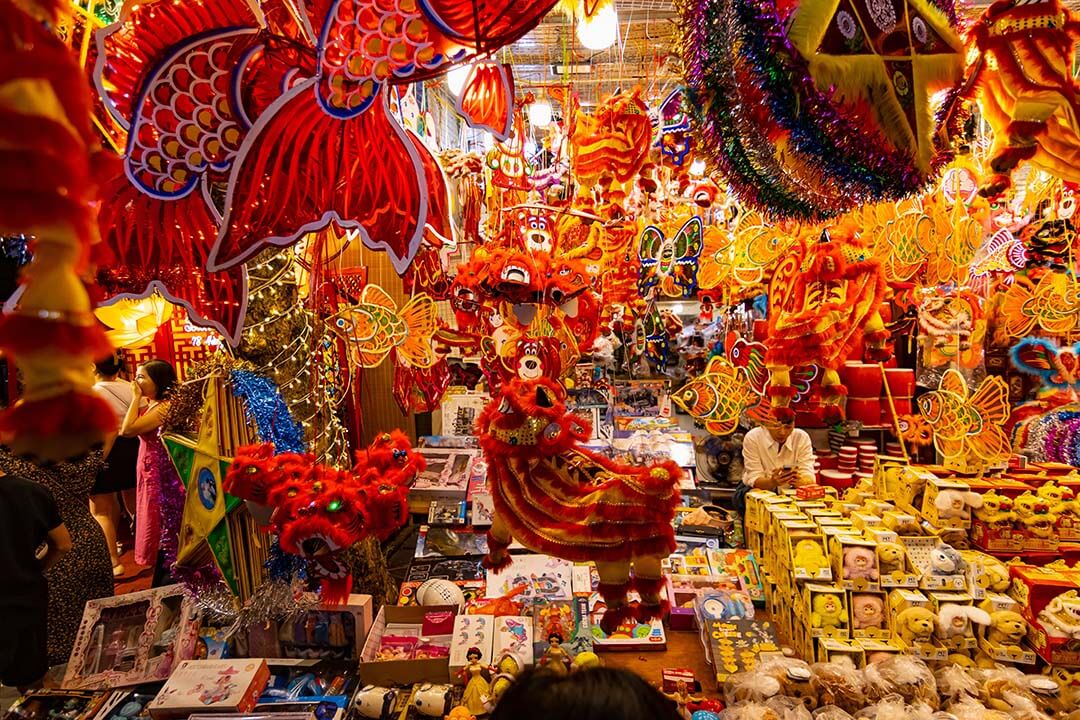
St. Joseph’s Cathedral Hanoi
St. Joseph’s Cathedral, a striking neo-Gothic structure, stands out in Hanoi’s architectural landscape. Completed in 1886 during the French colonial period, the cathedral features intricate stained glass windows, a grand facade, and twin bell towers. It serves as a significant religious and cultural landmark in Hanoi, attracting both tourists and locals. The cathedral’s elegant design and historical importance make it a key site for those interested in the colonial history and architectural diversity of the city.
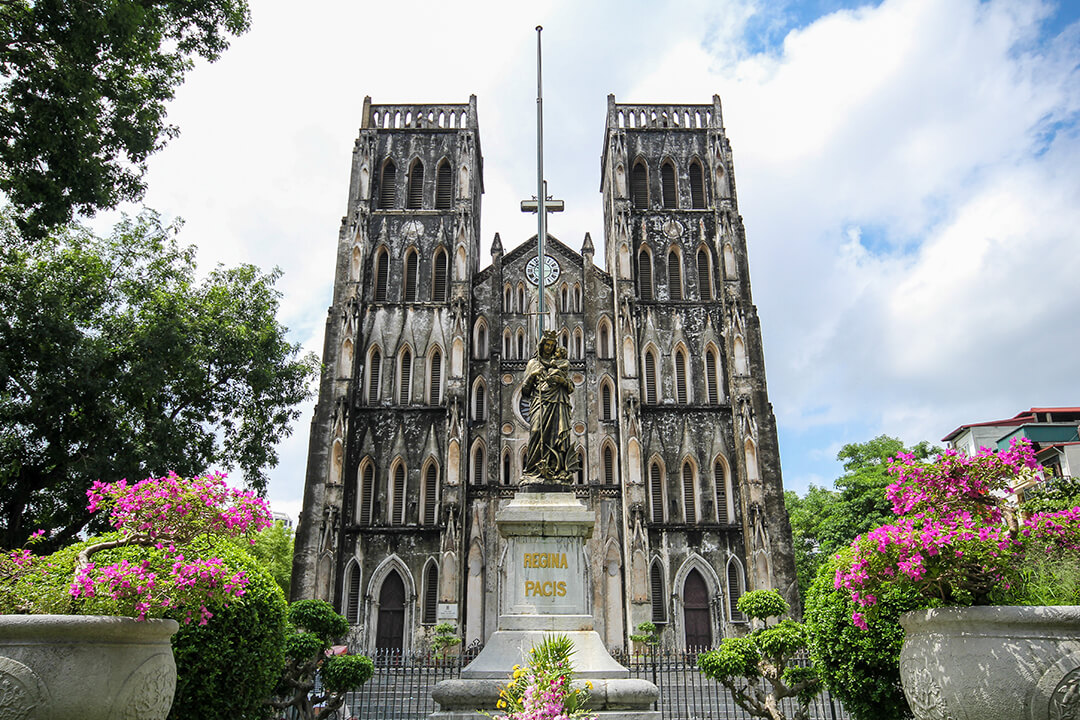
The Hanoi Police Museum provides a captivating exploration of Vietnam’s law enforcement history, showcasing the development and significant contributions of the Hanoi police force. Through its diverse exhibits, visitors gain valuable insights into how the police have evolved. Including a visit to this museum in your travel plans offers a deeper appreciation of Vietnam’s heritage. For more in-depth information and recommendations on navigating Hanoi and other must-see spots, explore our Vietnam Travel Tips to make the most of your journey.


